#dromeas
Explore tagged Tumblr posts
Text

You wouldn’t want to accidentally bump into this enormous sculpture. Dromeas, also called The Runner is a huge sculpture by Greek artist Costas Varotsos, located in Athens, it is made of individual pieces of jagged glass stacked atop each other to take the blurred shape of a runner in motion.
.
.
.
#credit: @katerinakatopis
.
.
.
#greece #athens #dromeas #art
#athens greece#dromeas#runner#kostasvarotsos#glass sculpture#athens#athena#greece#street art#sculpture
115 notes
·
View notes
Text
New armour sets New armour sets New armour sets
A bit of a spoiler, tis from the trello just now seen it idhekskdn
Dromeas set, super excited about it I hope it lives up to its name and gives agility or speed
Dunno what the other two could possibly mean, I guess we'll see once the update comes
12 notes
·
View notes
Text
Ο δρομέας στον Μαραθώνιο που έτρεξε σχεδόν εννεα ώρες ξυπολητος, ντυμένος με στολή Σπαρτιάτη πολεμιστή!
Από τον Μαραθώνιο της Αθήνας. Ξυπόλητος δρομέας ντυμένος με στολή Σπαρτιάτη πολεμιστή! Ο δρομέας στον Μαραθώνιο που έτρεξε σχεδόν εννεα ώρες ξυπολητος, ντυμένος με στολή Σπαρτιάτη πολεμιστή! – olympia source https://www.olympia.gr/1608129/viral/o-dromeas-ston-marathonio-poy-etrexe-schedon-ennea-ores-xypolitos-ntymenos-me-stoli-spartiati-polemisti/
0 notes
Text
Ο δρομέας στον Μαραθώνιο που έτρεξε σχεδόν εννεα ώρες ξυπολητος, ντυμένος με στολή Σπαρτιάτη πολεμιστή!
Από τον Μαραθώνιο της Αθήνας. Ξυπόλητος δρομέας ντυμένος με στολή Σπαρτιάτη πολεμιστή! Ο δρομέας στον Μαραθώνιο που έτρεξε σχεδόν εννεα ώρες ξυπολητος, ντυμένος με στολή Σπαρτιάτη πολεμιστή! – olympia source https://www.olympia.gr/1608129/viral/o-dromeas-ston-marathonio-poy-etrexe-schedon-ennea-ores-xypolitos-ntymenos-me-stoli-spartiati-polemisti/
0 notes
Text
Ο δρομέας στον Μαραθώνιο που έτρεξε σχεδόν εννεα ώρες ξυπολητος, ντυμένος με στολή Σπαρτιάτη πολεμιστή!
Από τον Μαραθώνιο της Αθήνας. Ξυπόλητος δρομέας ντυμένος με στολή Σπαρτιάτη πολεμιστή! Ο δρομέας στον Μαραθώνιο που έτρεξε σχεδόν εννεα ώρες ξυπολητος, ντυμένος με στολή Σπαρτιάτη πολεμιστή! – olympia source https://www.olympia.gr/1608129/viral/o-dromeas-ston-marathonio-poy-etrexe-schedon-ennea-ores-xypolitos-ntymenos-me-stoli-spartiati-polemisti/
0 notes
Text
Ο δρομέας στον Μαραθώνιο που έτρεξε σχεδόν εννεα ώρες ξυπολητος, ντυμένος με στολή Σπαρτιάτη πολεμιστή!
Από τον Μαραθώνιο της Αθήνας. Ξυπόλητος δρομέας ντυμένος με στολή Σπαρτιάτη πολεμιστή! Ο δρομέας στον Μαραθώνιο που έτρεξε σχεδόν εννεα ώρες ξυπολητος, ντυμένος με στολή Σπαρτιάτη πολεμιστή! – olympia source https://www.olympia.gr/1608129/viral/o-dromeas-ston-marathonio-poy-etrexe-schedon-ennea-ores-xypolitos-ntymenos-me-stoli-spartiati-polemisti/
0 notes
Text

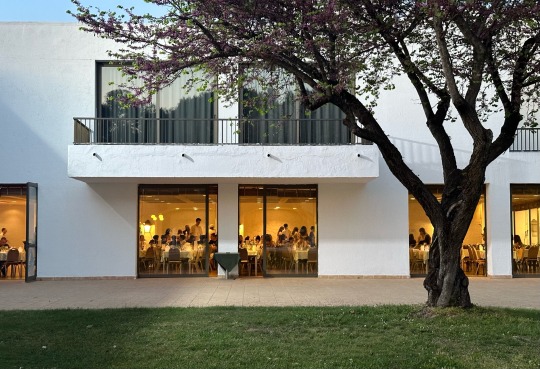
Greek mid century modernist architecture, and the Amalia Hotel in Olympia by famous Greek architect Nicos Valsamakis plus modern sculpture by famous Greek artist Costas Vatsos (creator of Dromeos in Athens).




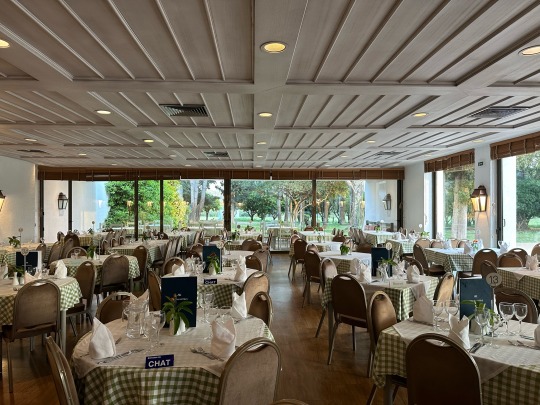
More about architect Nicos Valsamakis.

The Amalia Hotel Lobby.



More about Costas Vatsos: https://www.atlasobscura.com/places/dromeas
#modernism#mid century greek modernism#greek architecture#modern sculpture#greek modern sculpture#costas vatsos#nicos valsamakis
0 notes
Text
Dromeas - la sculpture géante d'un coureur en éclats de verre
Nouvel article publié sur https://www.2tout2rien.fr/dromeas-la-sculpture-geante-dun-coureur-en-eclats-de-verre/
Dromeas - la sculpture géante d'un coureur en éclats de verre

#Athenes#composition#Costas Varotsos#coureur#course#dynamique#écharde#grece#morceau#mouvement#Sculpture#verre#vidéo#art#imxok
0 notes
Text
This thing is disgusting
good to know you now make disgusting creatures AND weird characters like owl girl and orange cowboy who can’t keep his hands off the purple prince he found while robbing a bank, and like dromea idk what do say about him
And there’s uhhhhhhhhhhhhhhhhhhhhhh
The yerme

A basal yerme (Chatolis Domestica) a species of Hammer-dog that have been domesticated by the intelligents of my speculative evolution world: the muovis.
Muovis are carnivores with 2 beak structures to cut into flesh, they might look like dogs, but yermes act different, they're ambush predators like cats.

Here are two breeds of yerme showcasing their sized, with the top larger one being a: White-Yamman Golonteer and the small bottom: a Red Bloof.
7 notes
·
View notes
Text
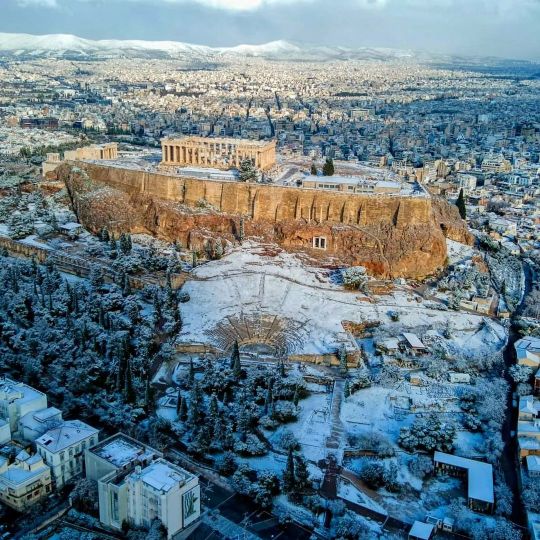

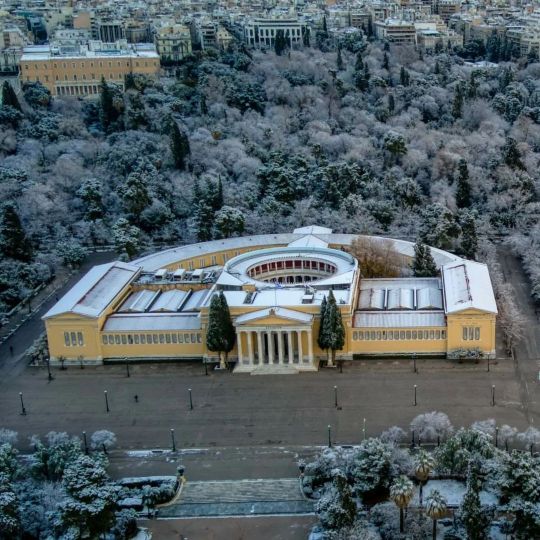
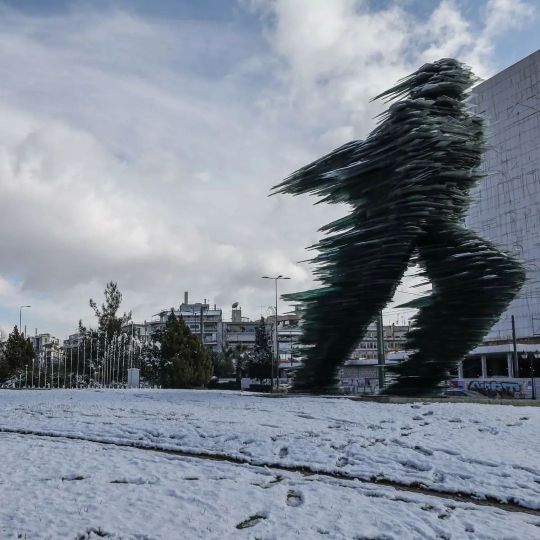

Images of a different Athens. Some of the most impressive photos of the past week are the landscapes left behind by bad weather Barbara just before it left. The Acropolis, Zappeion and Dromea are not often dressed in white, but in recent years, snow has visited the center of Athens quite a few times - a fact that fuels the debate about the climate crisis anew.
source: CNN Greece
0 notes
Photo



Dromeas (The Runner), Costas Varotsos Athens, Greece A sharp sculpture made of thousands of pieces of jagged glass.
2K notes
·
View notes
Text
I realised that I have romanticised pain and suffering in my mind. I read so many books and watched so many movies on people going through difficult and traumatic things. I coped with my pain in the same way.
I realise I'm wound up in certain patterns and I know I shouldn't but it's difficult to stop being that way. It's very difficult to tell myself it's okay to be different.
It's difficult to heal because I never saw them portray healing in what I read or watched. That wasn't shown. That was the epilogue. The after left ambiguous. Something that just happens. But that's untrue. It doesn't just happen. You have to work through it.
#healing#journey to freedom#pain#suffering#romanticising a difficult life#its time to move on#move on#grow#heal#learn#no more running#no more dromeas
2 notes
·
View notes
Link

Like most landmarks in any capital, the Runner has its admirers and its detractors. At more than 12 metres high, the 70-ton monument opposite Athens’ Hilton hotel is hard to miss. But whether Greeks love it or hate it, the gargantuan glass statue has become a fixture that few are willing to part with.
No one knows this better than Costas Varotsos, the internationally acclaimed artist who sculpted Dromeas – after the Greek word for runner – in the 1990s. His phone has been ringing off the hook since the Greek culture minister, Myrsini Zorba, purportedly proposed that the celebrated work should leave Greece in a cultural exchange that has exercised the nation, not least because the recipient country would have been the newly renamed North Macedonia.
“To say I was shocked would be an understatement,” the artist says, recalling his visit to Zorba’s office where the politician suggested the Runner be traded for a statue of Alexander the Great on a steed.
“I thought she had wanted to talk about cultural policy. Instead, she began saying: ‘I have this idea to move the Runner to Skopje, which is a beautiful city, you’d love it, and I wanted to know what you think.’”
The mild-mannered sculptor admits he was incensed at first. Then, he says, he found himself laughing because the idea “was just so surreal”.
“I am all for friendship with our neighbour but the Runner is a work that belongs to Athens and its people, so without hesitation I instantly said: ‘Forget it,’” he told the Guardian.
8 notes
·
View notes
Text
in progress
some country stuff
ROMA—> DAERMA
name comes from founder who was one of two abandoned twins suckled by a bear that lost her cubs. when she sent them to the ~urban world~, after learning the language and the flow of the city they were in, they spent time trying to solve disputes between humans by being a total outsider with no prior knowledge of human civilization. eventually they gained a following as community leaders, and seeing that many people wished to leave their city, the twins decided to make their own. while scouting out new land, the twins, in accordance with the traditions of the people, decided to give the city one of their names, using omens to determine which one of them would lend their name. after walking separate ways, DAERMICA (she whose name means fearful, fierce) counted more birds in the sky than her brother LUCELUS (he whose name means rays of light), and thus named the city DAERMA. despite naming the city for herself, Daermica wanted her brother Lucelus’ help in the city as a fellow leader. After the main houses and buildings in the city were completed, Daermica did as custom and, in the dark of night before sunrise, sowed a line around the city called the “pomerium”--this was not the city wall but the religious border, a sacred space with limited activity that preserved the heart of the city. As Daermica sowed this sacred border, though, a figure cloaked in shadow approached the pomerium line from the outer limits of the city, known only to Daermica by the faint sound of footsteps. She did not announce herself, in order to retain cover in case of attack, for Daermica, like all Daermans after her, was strong but smart, and would not put herself at risk in such an undeterminable situation. The figure seemed to approach her directly, however, and in the dark of night the bear-cub (“ursula”) drew her gladius from her side, readying herself for attack. The stranger, too, drew their sword, the metal blade ringing in the blackness. Daermica, as a skilled swordswoman, was quick to position her blade to disarm the stranger—but Ferox Fortuna moved the stranger’s feet at the wrong time, tripping into a lunge towards her, and Daermica, believing this to be an attack, thrust her sword forward. But as the stranger fell forward ever more, the movement was not a block of their blade, but a fatal wound to their soft underbelly. Daermica rushed towards the stranger who now lay on their back, coughing and wheezing, and uncovered their hood to find the face of her brother Lucelus. Daermica wept and tore at her hair as her brother’s blood stained the sacred heart of their city. Though she continued to lead, the weight of this accidental death burdened Daermica until she was reunited with Lucelus in the underworld, where they now live peacefully and without fear. Lucelus’ blood remains a stain on the legacy of Daerma—though some argue this was the fertilizer necessary to build the great empire, the first death in a history of conquest. But all true citizens honor the twin bear-cubs.
GREECE/ELLAS/HELLAS/ELLADA —> EUPHRODAS / GLAUCEA
Not as much of a backstory here, though there are two names I am going to use for it, which is significant. “Ellas” is the ancient self-descriptor of the Achaeans, used almost exclusively. This comes from Hellen, son of Deucalion and Pyrrha, who fathered sons that all went on to father their own tribes across the land. This makes him a sort of all-father figure. I think I will say fuck it and make a guy named Euphron who has four daughters named Dromea, Amometa, Iuolia, and Khoirile. Their names make up the main four tribes of Euphrodas. As for the Daerman name for Euphrodas, I will go with Glaucea (this word means grey and Graecea also might mean that). What’s it a reference to? No idea! Probably fog or something. I don’t fucking know what the Romans were thinking, ever.
2 notes
·
View notes

